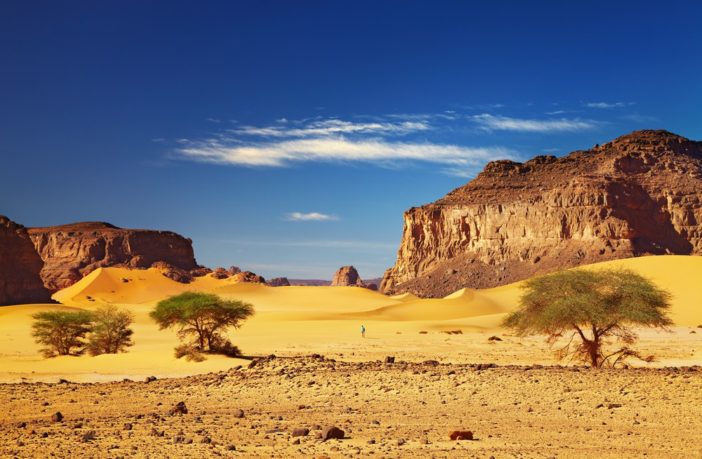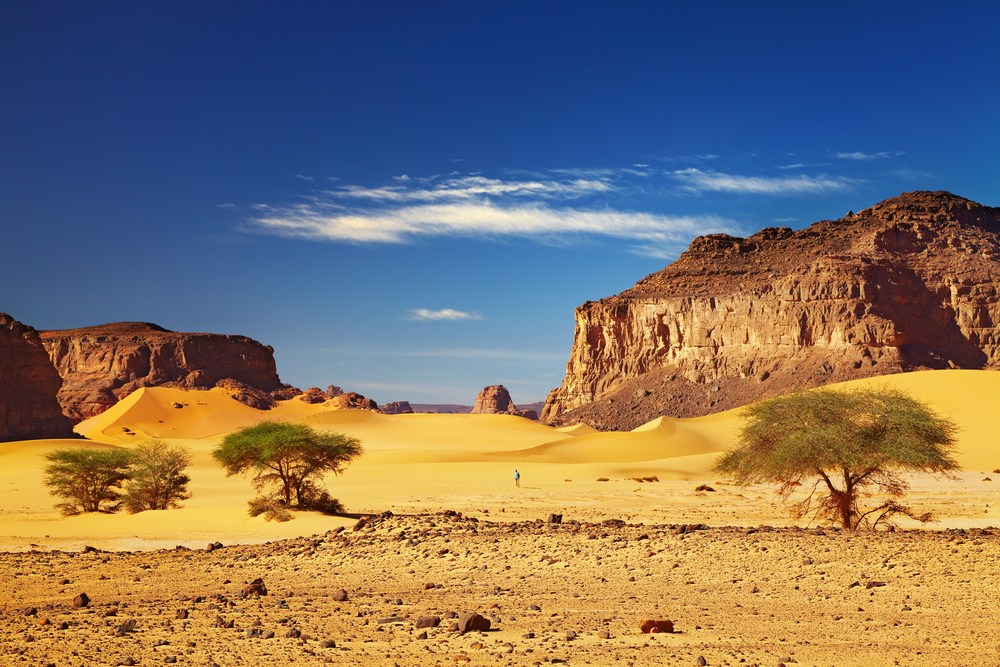Reliefweb.int
By Baher Kamal
Report from Inter Press Service
With the highest temperatures on record and unprecedented heat waves hitting Europe this year, Africa’s ‘Great Desert’, the Sahara, is set continue its relentless march on the Southern European countries until it occupies more than 30 per cent of Spain just three decades from now.
The Sahara is the largest hot desert on Earth, covering more than 9,000 square kilometres, comparable to the surface of China or the United States. Called originally in Arabic “Al Sahara Al Kubra’ (the Great Desert), it comprises much of North Africa, the Atlas Mountains of the Maghreb, and the Nile Valley in Egypt and Sudan.
It stretches from the Red Sea in the West and the Mediterranean in the North to the Atlantic Ocean in the West, including 10 countries: Algeria, Chad, Egypt, Libya, Mali, Mauritania, Morocco, Niger, Sudan, and Tunisia.
For its part, the European Union’s RECARE project (Preventing and Remediating degradation of soil in Europe through Land Care), estimates that 20 per cent of all Europe’s land surface is already subject to erosion rates above 10,000 hectares per year, while soil sealing (the permanent covering of soil with an impermeable material) leads to the loss of more than 1,000 sq km of productive land each year.
The European Union also reports that between 1990 and 2000, at least 275 hectares of soil were lost per day in the EU, amounting to 1,000 sq km per year. Between 2000 and 2006, the EU average loss increased by 3 per cent, but by 14 per cent in Ireland and Cyprus, and by 15 per cent in Spain.
Africa
Meantime, Africa is prey to a steady process of advancing droughts and desertification, posing one of the most pressing challenges facing the 54 African countries, home to more than 1.2 billion people.
Right now, two-thirds of Africa is already desert or dry-lands. While this land is vital for agriculture and food production, nearly three-fourths of it is estimated to be degraded.
Asia
In a parallel process, desertification manifests itself in many different forms across the vast region of Asia and the Pacific, the United Nations reports. Out of a total land area of 4.3 billion hectares reaching from the Mediterranean coast to the shores of the Pacific, Asia contains some 1.7 billion hectares of arid, semi-arid, and dry sub-humid land.
Land degradation varies across the region. There are expanding deserts in China, India, Iran, Mongolia and Pakistan, encroaching sand dunes in Syria, steeply eroded mountain slopes of Nepal, and deforested and in Laos and overgrazed in central Asia counties. In terms of the number of people affected by desertification and drought, Asia is the most severely affected continent.
In 2015, Asia-Pacific continued to be the world’s most disaster-prone region. Some 160 disasters were reported in the region, accounting for 47 per cent of the world’s 344 disasters.
The region bore the brunt of large-scale catastrophic disasters with over 16,000 fatalities — more than a two-fold increase since 2014. South Asia accounted for a staggering 64 per cent of total global fatalities — the majority was attributed to the 7.6 magnitude earthquake that struck Nepal in April, which caused 8,790 deaths.
Latin America and the Caribbean
Meanwhile, Latin America and the Caribbean are home to some of the most biodiverse and productive ecosystems in the world, according to the World Resources Institute’s report The Restoration Diagnostic.
The region holds about half of the world’s tropical forests, and more than 30 per cent of its mammals, reptiles, birds and amphibians.
But despite the region’s ecological importance, more than 200 million hectares of land has been completely deforested or degraded in the past century, an area the size of Mexico.
Summit in China
These are just some of the facts that the United Nations Convention to Combat Desertification (UNCCD) will put before the eyes of world leaders during the 13th session of the Conference of the Parties (COP 13) in Ordos, China (6 -16 September 2017).
The Convention will also highlight to political leaders, decision makers, experts and civil society organisations participating in COP13 the fact that Africa is severely affected by frequent droughts, which have been particularly severe in recent years in the Horn of Africa and the Sahel.
And that the consequences are there: widespread poverty, hard socio-economic conditions, and many people dependent on natural resources for their livelihoods.
For many African countries, says UNCCD, fighting land degradation and desertification and mitigating the effects of drought are prerequisites for economic growth and social progress.
But not all news is bad news. In fact, increasing sustainable land management (SLM) and building resilience to drought in Africa can have profound positive impacts that reach from the local to the global level.
The UNCCD has elaborated ways how to achieve this vital objective thought its Regional Implementation Annex for Africa, which outlines an approach for addressing desertification, land degradation and drought (DLDD) on the African continent.
Work in Progress
Meanwhile, progress is underway. All African countries are Parties to the UNCCD and most of have developed and submitted National Action Programmes (NAPs). Also in order to facilitate cooperation on issues related to land degradation, African countries have created five Sub-Regional Action Programmes (SRAPs) and a Regional Action Programme (RAP).
The RAPs compose six thematic programme networks (TPNs) that concern integrated water management; agro-forestry; soil conservation; rangeland management; ecological monitoring and early warning systems; new and renewable energy sources and technologies, and sustainable agricultural farming systems.
Since the adoption of the UNCCD’s 10-Year Strategy, the sub-regional entities have begun aligning their action programmes to it, particularly the North, Central and Western African programmes. The other two sub-regions have already benefited from training by the UNCCD on how to align their programmes to the Strategy.
Similar actions to mitigate, halt and prevent the widespread process of advancing droughts and desertification are being implemented in all other impacted regions, and further efforts will be required. Not an easy task for decision-makers in this COP 13 in Ordos, China.








